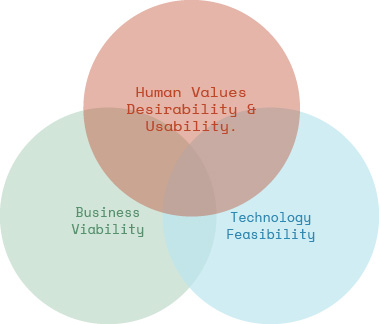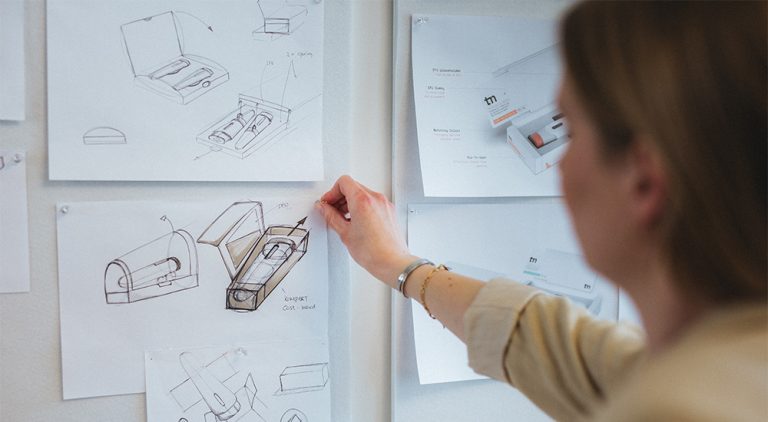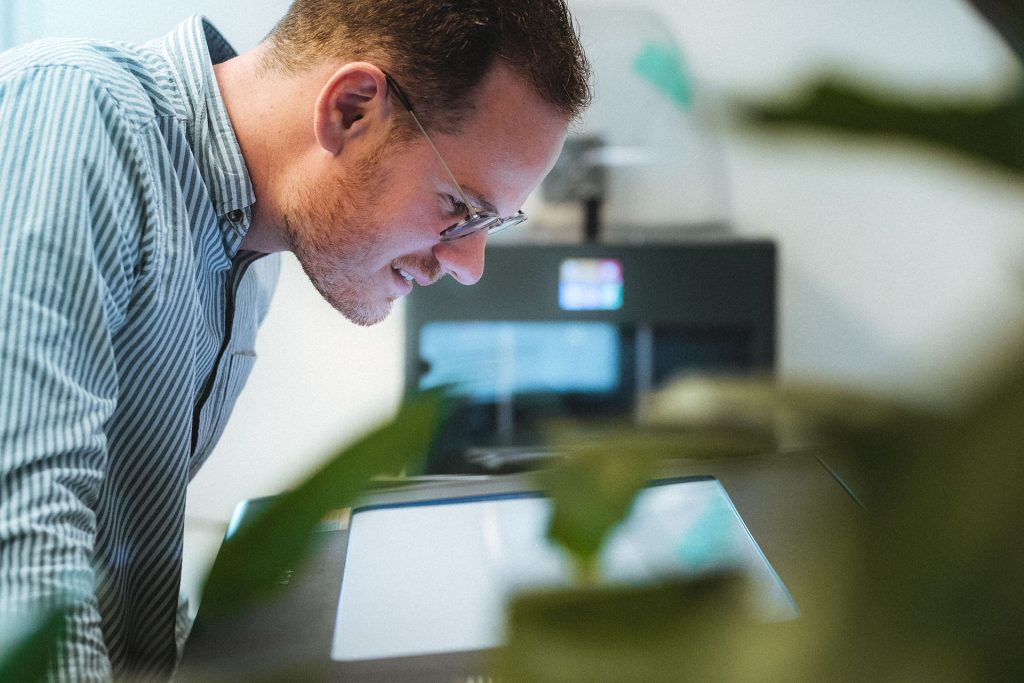Designing medical devices
How not to be part of the 80% of product innovations that fail
Every year, thousands of new products are introduced to the market. And every year, 80% of them fail. What’s the reason for this staggering statistic? In most cases, it’s because the product innovation just isn’t good enough. It doesn’t solve a problem that people have, or it doesn’t do it in a way that is better than existing solutions.
If you’re working on developing a new product, you must avoid becoming a part of this 80%. In this blog post, we’ll show you how. From market research to product development and everything in between, following these steps will help you increase your chances of success.
THE SHORT VERSION
Challenge: When it comes to product innovation, the most significant challenge is to ensure that the product effectively addresses an existing need or problem that customers are willing to pay for and patients are willing to use.
Result: To create a standout product that succeeds in the market, it is imperative to do thorough and iterative market validation and gather customer feedback. It’s not just about having a great idea but also about balancing desirability, feasibility, and viability.
Conclusion: Early and regular “pretotyping” tests are vital for understanding real customer needs, addressing potential issues, and validating assumptions. It’s crucial to avoid confirmation bias and stay open to contradictory evidence. Analyzing product failures and taking proactive steps to prevent them increases the likelihood of creating a successful product.
THE LONG READ
Key Factors for successful product innovation
Why do most product innovations fail?
Most product innovations fail because they don’t solve a problem that people actually care about. In order to be successful, a product must offer a unique solution to a problem that people are willing to pay for.
In addition, most products fail because they are not properly marketed. Even the best products in the world will fail if no one knows about them. To be successful, a product must be marketed effectively to the right audience.
Finally, many products fail because they are not sustainable. In order to be successful, a product must have a business model that can support continued innovation and growth.
If a product does not meet a user need or desire, it is likely to fail because it will not be able to attract and retain a customer base. People are more likely to buy and continue using a product if it helps them solve a problem or fulfills a need or desire they have. If a product does not do this, it is unlikely to be successful because people will not see the value in it and will not be willing to pay for it.
How to create a product innovation that succeeds: desirability, feasibility, and viability
To prevent this kind of failure, it is important to carefully research and understand the needs and desires of the target market. This can involve conducting market research, gathering customer feedback, and analyzing data about customer behavior. With this information, companies can develop products that are more likely to meet the needs and desires of their target market, increasing the chances of success.
Creating a product innovation that succeeds requires more than just a great idea. It requires a careful balance of desirability, feasibility, and viability.

Desirability is about whether or not people actually want your product. This can be difficult to gauge without doing market research or testing your product with potential customers.
Feasibility is about whether or not your product can be created and brought to market. This includes considerations like manufacturing costs, regulatory hurdles, and supply chain logistics.
Viability is about whether or not your product will be profitable. This includes considerations like pricing, margins, and competition.
All three of these factors must be considered when creating a new product innovation. If one of them is out of balance, it can jeopardize the success of the entire venture.

Effective Product Development
Test early and often
Test early, address assumptions, and learn from success stories
If you’re like most people, you probably think that the key to successful product innovation is coming up with a great idea and then perfecting it before bringing it to market. But the reality is that most products fail, not because they’re bad ideas, but because they’re not tested early and often enough.
The sooner you can get your product into the hands of potential customers, the better. That way you can get feedback and make changes before it’s too late. Don’t wait until your product is launched – pretotype instead (yes, with an ‘e’).
Pretotyping is a lightweight version of prototyping that is used to test the core concept of a product or service quickly and inexpensively. It involves creating a minimal representation of the product or service in order to gather feedback and validate assumptions quickly and inexpensively. The goal of pretotyping is to determine whether the core concept is viable and worth investing more time and resources into.
There are several benefits to testing product ideas with pretotyping:
- Identifying and addressing potential issues: Pretotyping allows you to test your product ideas in a low-risk, low-cost environment, which can help you identify and address any potential issues before they become costly to fix.
- Gathering user feedback: Pretotyping allows you to get direct feedback from users, which can help you refine and improve your product ideas based on their needs and preferences.
- Validating assumptions: Pretotyping allows you to test and validate your assumptions about how the product will be used and what features and functionality are most important to the user.
- Facilitating collaboration: Pretotyping can help facilitate collaboration among team members and stakeholders by providing a concrete representation of the product that can be discussed and refined.
- Saving time and resources: By testing and refining your product ideas through pretotyping, you can save time and resources by identifying and addressing potential issues early on in the design process, rather than after significant time and resources have been invested in the final product.
Hence, pretotyping is a valuable step in the product development process. It allows you to test product ideas, gather user feedback, validate assumptions, facilitate collaboration, and save time. But how do you go about testing your business pretotype?
There are a few different ways:
- Conduct user testing: Invite a small group of users to test the pretotype and ask them for feedback on their experience. This can be done in person or remotely, depending on the resources and logistics available.
- Use online surveys: Create an online survey and ask users to test the pretotype and provide feedback. This can be an effective way to gather feedback from a larger group of users.
- Seek feedback from experts: Reach out to experts in your field and ask them to review the pretotype and provide feedback. This can be especially helpful if you are developing a product or service that requires specialized knowledge or expertise.
- Engage with the community: Share the pretotype with relevant online communities or forums and ask for feedback. This can be a great way to get feedback from a diverse group of users.
Overall, the key is to be proactive in seeking feedback and be open to incorporating feedback into the development process.
No matter which method (or methods) you choose, the important thing is to start testing as early as possible and to keep doing it throughout the development process. It’s the only way to make sure your product or service is actually what your customers want.
Be aware of assumptions and confirmation bias
Assuming that your product is going to be a success can lead to confirmation bias, where you only look for information that supports your beliefs. This can blind you to potential problems and cause you to ignore feedback from customers or other stakeholders. Try to stay open-minded and be willing to consider evidence that contradicts your assumptions.
Confirmation bias often leads project teams to persist with a failing idea because they can’t see its flaws. Be willing to change your plans in the face of evidence that shows you’re on the wrong track.
Case studies of product innovations that have succeeded
When it comes to product innovation, there are countless case studies of products that have succeeded and made a lasting impact. Here are a few examples:
The Iphone
Apple’s original iPhone was released in 2007 and was a game-changer in the smartphone market. It introduced a new way of interacting with devices and ushered in the era of mobile computing.
Tesla Model S
Tesla’s Model S electric car was released in 2012 and quickly became the best-selling luxury car in the United States. It showed that electric cars could be not only practical but also stylish and luxurious.
Google Maps
Google Maps was first released in 2005 and quickly became the go-to mapping service for millions of people around the world. It changed the way we interact with maps and made getting from point A to point B much easier.
WANT TO talk?
Let's get in touch
Do you want to know more or didn’t you find what you were looking for?
As Head of User Experience and Design Kasper is prepared to receive your enquiry.

related cases
Cases you might be interested in:

So you want to launch a product people will love?
You have an idea for a new product. It is actually great and you think to yourself: ‘If I find this useful surely others will, too. People even say they can’t wait to get their hands on it.